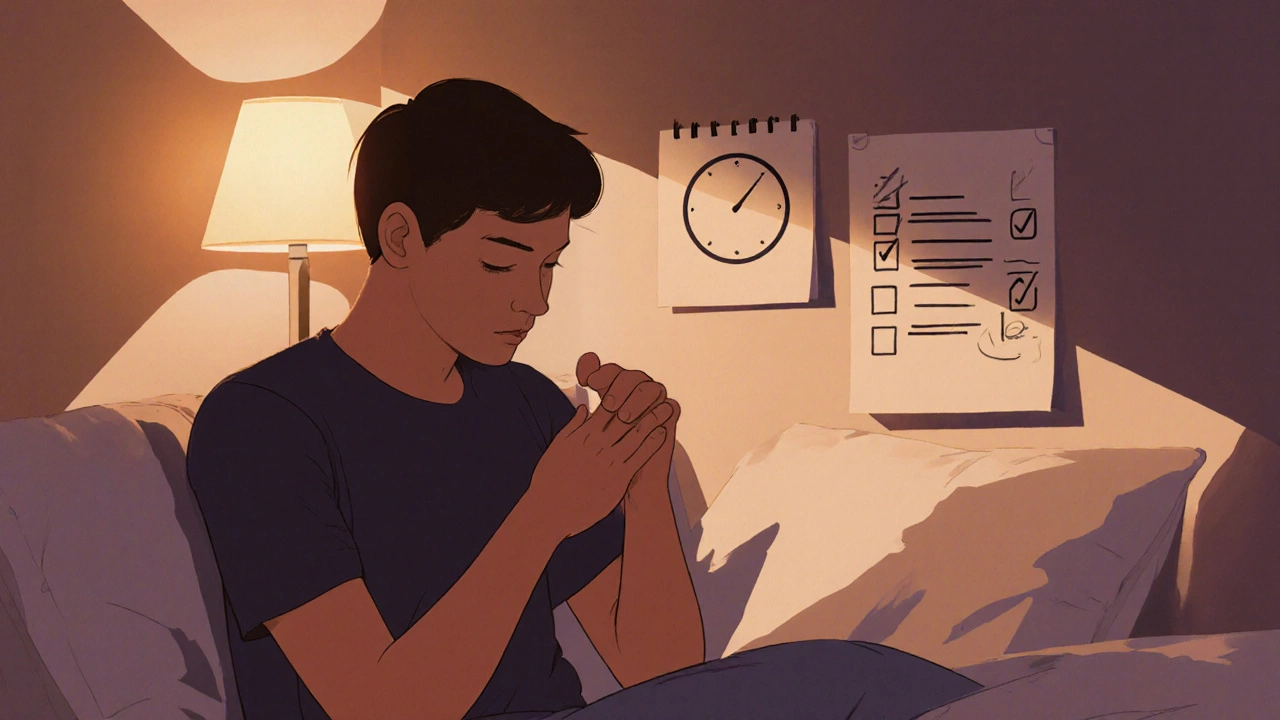Cancer Screening Checklist Tool
Personalized Screening Recommendations
Answer a few simple questions to get tailored recommendations for cancer screenings. Early detection is the key to treating these cancers effectively.
When someone hears the word cancer, panic often follows. But not all cancers are the same. Some types respond incredibly well to treatment-especially when caught early. The truth is, there are cancers that doctors can cure in most cases, even with simple methods. These aren’t rare exceptions. They’re common, well-studied, and treatable with high success rates.
Thyroid Cancer: Often Curable with Surgery Alone
Thyroid cancer is one of the most treatable cancers today. About 98% of people diagnosed with papillary thyroid cancer-the most common type-live at least five years after diagnosis. Many live much longer, often with no further treatment needed after surgery.
The thyroid is a small butterfly-shaped gland in your neck. When cancer forms there, it usually grows slowly. In early stages, it rarely spreads beyond the gland. Surgeons remove the affected part (or all) of the thyroid. Afterward, patients take a daily pill to replace thyroid hormones. Radiation therapy is only needed in a small number of cases.
Unlike aggressive cancers that require years of chemo, thyroid cancer often ends with one operation and a routine pill. That’s why doctors call it one of the easiest cancers to treat-especially when found during a routine checkup or when a lump appears in the neck.
Testicular Cancer: High Cure Rates Even When Spread
Testicular cancer affects young men, typically between ages 15 and 35. It’s rare compared to other cancers, but it’s also one of the most curable. Even when it spreads to lymph nodes or other organs, the cure rate still exceeds 95% with proper treatment.
Most cases are detected by men themselves-through self-exams or noticing a painless lump. Treatment starts with removing the affected testicle. Then, depending on the stage, doctors may use chemotherapy or radiation. The drugs used, like cisplatin, are extremely effective against this cancer type.
What makes testicular cancer so responsive? Its cells are unusually sensitive to chemotherapy. Even in advanced stages, the body clears the cancer in most patients. Men who’ve had testicular cancer often return to normal life, including having children, after treatment.
Prostate Cancer: Slow-Growing and Often Manageable
Prostate cancer is the most common cancer in men after skin cancer. But here’s the twist: many men live with it for years without ever needing treatment. That’s because most prostate cancers grow so slowly that they never become life-threatening.
Doctors now use active surveillance for low-risk cases. Instead of rushing into surgery or radiation, they monitor the cancer with regular blood tests (PSA), biopsies, and scans. If it starts to grow faster, then treatment kicks in.
When treatment is needed, options include minimally invasive surgery, targeted radiation, or hormone therapy. Survival rates are near 100% for localized prostate cancer. Even in moderate cases, the five-year survival rate is over 98%.
The key? Early detection. A simple blood test can catch it before symptoms appear. Many men avoid screening out of fear-but for prostate cancer, that fear can be more dangerous than the cancer itself.

Melanoma (Skin Cancer): Preventable and Highly Treatable Early
Not all skin cancers are the same. Basal cell and squamous cell carcinomas are common but rarely deadly. Melanoma is the dangerous one-but only if ignored.
When caught early, melanoma has a 99% five-year survival rate. That’s because it grows on the skin’s surface. You can see it. You can feel it. A new mole, a spot that changes shape, bleeds, or itches-these are red flags.
A dermatologist can remove early melanoma with a simple outpatient procedure. No chemo. No hospital stay. Just a local anesthetic and a small excision. If it’s caught before it spreads deeper than 1 millimeter, the chance of recurrence is extremely low.
Prevention matters. Daily sunscreen, avoiding midday sun, and checking your skin monthly can stop melanoma before it starts. In countries with strong public awareness, like Australia, melanoma death rates have dropped by 30% in the last decade.
Breast Cancer: Early Detection Changes Everything
Breast cancer is common-but not always deadly. When detected early (Stage 0 or Stage I), the five-year survival rate is over 99%. That’s better than many everyday illnesses.
Screening with mammograms finds tumors before they can be felt. Small, localized tumors can be removed with lumpectomy (saving the breast) followed by radiation. Hormone-blocking pills may be prescribed for years afterward to prevent return.
Even some Stage II cases have excellent outcomes. Newer treatments like targeted therapies (for HER2-positive cancers) and immunotherapy have improved survival dramatically. Women who get screened regularly and act fast on changes have near-normal lifespans.
The biggest mistake? Waiting. Many women delay mammograms because they feel fine. But cancer doesn’t always cause pain. By the time it hurts, it may be harder to treat.
Why Some Cancers Are Easier to Treat
Not all cancers are created equal. The easiest ones to treat share three traits:
- They grow slowly-giving time to detect and act before spreading.
- They’re visible or detectable early-through self-exams, imaging, or simple blood tests.
- They respond well to one or two treatments-surgery, radiation, or targeted drugs-without needing complex, multi-year regimens.
Compare that to pancreatic or lung cancer, which often spread silently and resist standard treatments. Those are harder to catch early and harder to kill once they’re inside the body.
The takeaway? It’s not about the type of cancer alone. It’s about timing. A slow-growing, visible cancer like thyroid or skin cancer can be cured with one doctor’s visit. A silent, fast-spreading cancer needs years of treatment-and still may not be beaten.

What You Can Do Right Now
If you want to give yourself the best shot at beating cancer before it becomes a battle, here’s what works:
- Get annual skin checks if you have moles or a family history of melanoma.
- Men over 45: Talk to your doctor about PSA testing for prostate cancer.
- Women over 40: Get a mammogram every 1-2 years.
- Check your neck for lumps. Thyroid cancer is often found this way.
- Men: Do monthly testicular self-exams. It takes 2 minutes.
These aren’t scary procedures. They’re simple, quick, and often free or covered by insurance. The cost of skipping them? Much higher.
Survival Isn’t Luck-It’s Timing
The easiest cancer to treat isn’t the one with the least aggressive cells. It’s the one you catch before it has a chance to grow. The five cancers listed above aren’t easy because they’re weak. They’re easy because we know how to find them early-and we have simple, proven ways to remove or control them.
Cancer isn’t one disease. It’s hundreds. And for many of them, survival isn’t a miracle. It’s a predictable outcome-if you act fast. Don’t wait for symptoms. Don’t ignore a lump. Don’t skip your screening. Your next checkup might be the one that saves your life.
Is thyroid cancer really curable?
Yes, thyroid cancer is one of the most curable cancers. For papillary thyroid cancer-the most common type-the five-year survival rate is about 98%. Most patients are cured with surgery alone, followed by a daily hormone pill. Radiation or chemo is rarely needed.
Can testicular cancer come back after treatment?
It can, but it’s rare. When caught early, the chance of recurrence is less than 5%. Even when it spreads, modern chemotherapy cures over 95% of cases. Regular follow-up scans for the first few years after treatment help catch any return early.
Do all prostate cancers need treatment?
No. Many prostate cancers grow so slowly that they never cause harm. Doctors often recommend active surveillance-monitoring with blood tests and biopsies-instead of immediate treatment. Surgery or radiation is only started if the cancer shows signs of becoming aggressive.
Is melanoma dangerous if caught early?
Not at all. When melanoma is caught before it grows deeper than 1 millimeter, the cure rate is nearly 100%. A simple skin biopsy and removal are usually all that’s needed. The danger comes from delaying the visit to a dermatologist.
Why is early detection so important for breast cancer?
Breast cancer caught at Stage 0 or Stage I has a 99% five-year survival rate. At this stage, the tumor is small and hasn’t spread. Surgery (often just removing the tumor) and radiation are enough. By Stage III, survival drops to 72%. Screening finds cancer before symptoms appear-when it’s easiest to treat.
Can I prevent these cancers?
You can’t prevent all cancer, but you can reduce your risk. For melanoma, use sunscreen and avoid sunburns. For prostate and breast cancer, regular screenings catch it early. For testicular cancer, monthly self-exams help you notice changes fast. For thyroid cancer, know your family history and get checked if you notice a neck lump.
What If I’m Not Sure What to Do?
If you’re unsure which screenings you need, start with your primary care doctor. Ask: "Based on my age, gender, and family history, what cancer screenings should I be getting right now?" Most clinics offer free or low-cost screenings. Waiting for symptoms is the biggest risk.
Don’t assume cancer only affects older people. Testicular cancer hits young men. Melanoma strikes people in their 20s. Thyroid cancer is more common in women under 50. No one is immune. But everyone can act.
